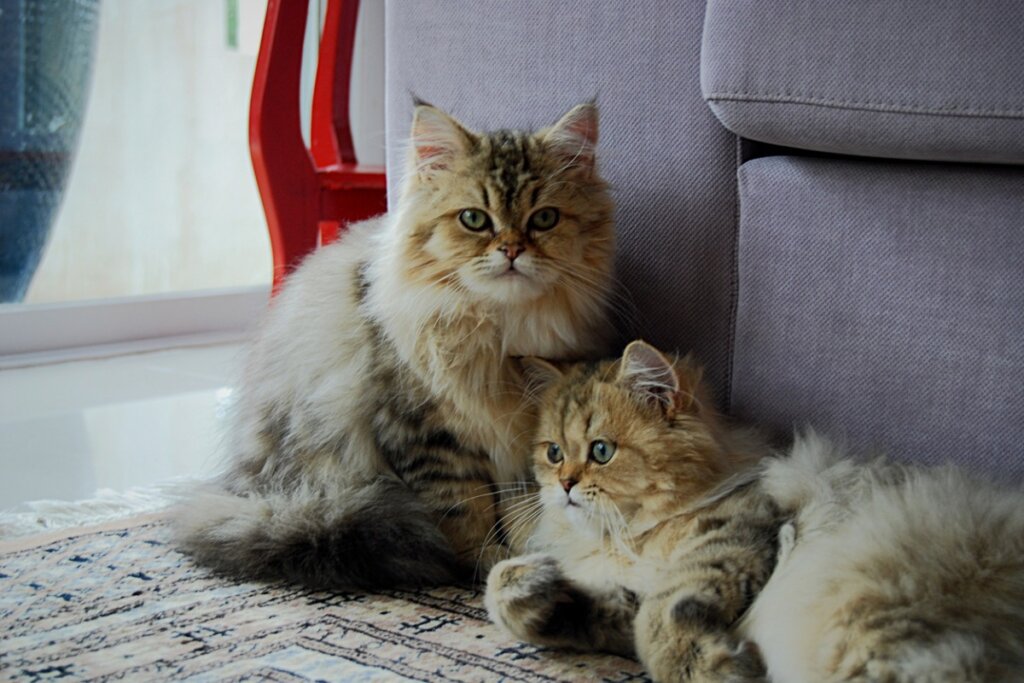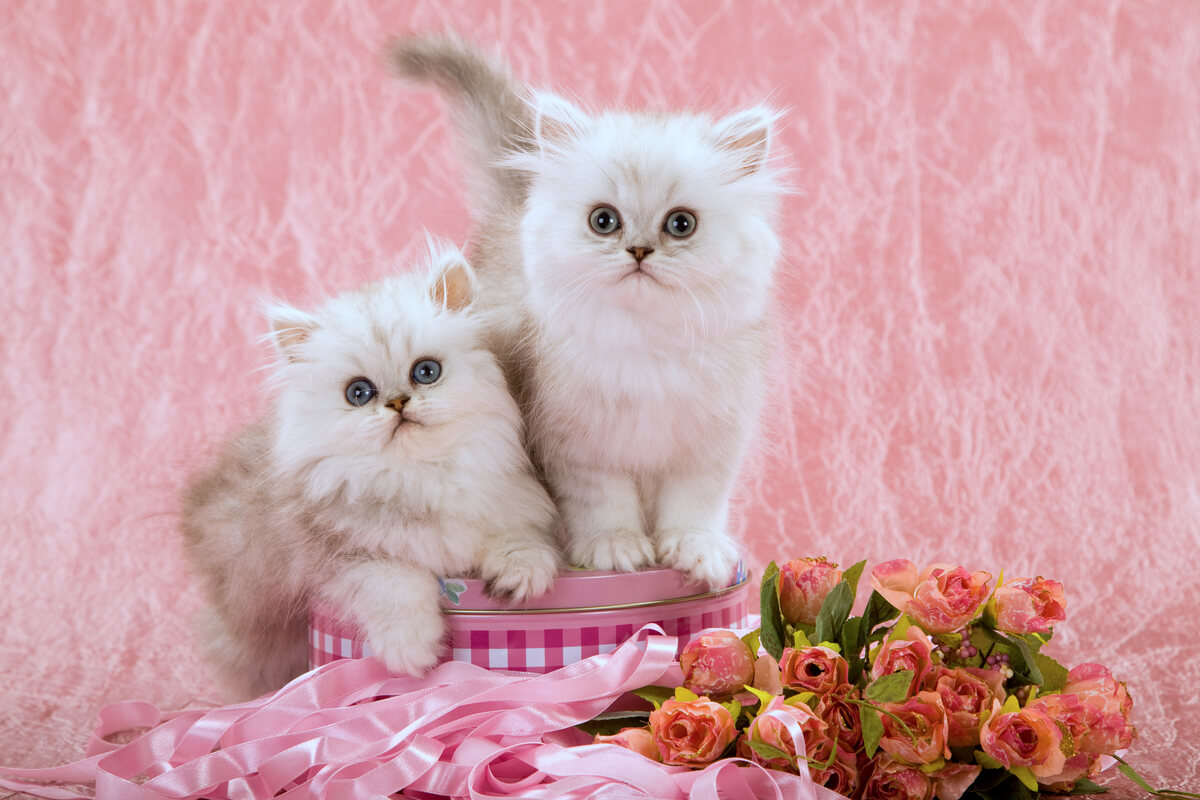Do Twin Cats Exist?

The existence of twin cats – feline siblings that start from the same egg and sperm – is possible. However, to date there are no genetic studies capable of indicating in a 100% reliable way that two cats are genetically identical.
Usually, cats have multiple litters. On very few occasions a single specimen is born. Each cat usually has a different color and it’s very rare for two cats to look exactly the same. So, do twin cats exist or are they just siblings that look very alike?
How common are twin cats?
As there’s no reliable data on the existence of genetically identical felines, we cannot say with certainty that twin cats exist. On the other hand, embryonic development or embryogenesis is similar to that of any other higher-order mammal, so it cannot be flatly denied that they don’t exist.
The type of ovulation in cats is defined as induced ovulation. This means that when a cat goes into heat, she will only produce eggs when she copulates. Intercourse raises levels of a hormone – called luteinizing hormone – that causes the egg to be released.
Because of this, each copulation will give rise to a single cat. Throughout the heat, the cat copulates with more than one male, hence each baby usually has a different color, because the father isn’t the same. When two cats appear to be twins, it will most likely be because they have the same father, something rare in feral cats.
In addition to genetic analysis as the only reliable way to determine if two individuals are twins, another option is to witness the cat’s whole birthing process. As you can imagine, this isn’t possible in many cases.

Delivery of a cat
During pregnancy, the young are located along the two uterine horns, one behind the other. The separation between them consists of two resistant membranes, inside which is the placenta. This means that each cat will be born inside a small tissue sac, next to its placenta.
In the case of a twin gestation, what would be expected is that both twin cats were in the same sac and shared a placenta. However, this situation is quite delicate and dangerous for the unborn.
The most normal thing, as it happens in other mammals, is that the ovum separates definitively in two after several days of development and each cat has its own bag and placenta.
Once this information is known, it’s confirmed that the only way to know if two cats are really identical is through a genetic analysis. On the other hand, although both felines are apparently the same, the sex must also be defined. A male and a female, even if they appear identical, never will be twins. Twin cats must be of the same gender.
How do you differentiate the sex of kittens?
The sex of the offspring can be known as soon as they’re born. However, if a few days are allowed to pass, the genus can be observed more easily. In addition, in the first hours it’s better to let the newborn cats be cleaned by the mother and for them to start taking colostrum.
The characteristic that must be observed in order to know the sex of a cat is the anogenital distance. This is the distance between the anus and the urethra. In males, the urethra is easily identifiable because it coincides with the penis. On the contrary, in females it will be necessary to look at the end of the genital opening.
The anogenital distance in males is more than double that in females, since between the urethra and the anus we find the testicles – or the sac that will contain them when the cat grows up. As we’ve said, for two cats to be twins, they must have the same sex.

Two felines are often so similar that you could say that they are twins, at least physically, although it’s very difficult for science to back it up.
All cited sources were thoroughly reviewed by our team to ensure their quality, reliability, currency, and validity. The bibliography of this article was considered reliable and of academic or scientific accuracy.
- Borschberg, P. (2012). The Singapore Straits in the Latter Middle Ages and Early Modern Period (c. 13th to 17th Centuries) Facts, Fancy and Historiographical Challenges. Journal of Asian History, 46(2), 193-224.
- Rand, J. S., Bobbermien, L. M., Hendrikz, J. K., & Copland, M. (1997). Over representation of Burmese cats with diabetes mellitus. Australian veterinary journal, 75(6), 402-405.
